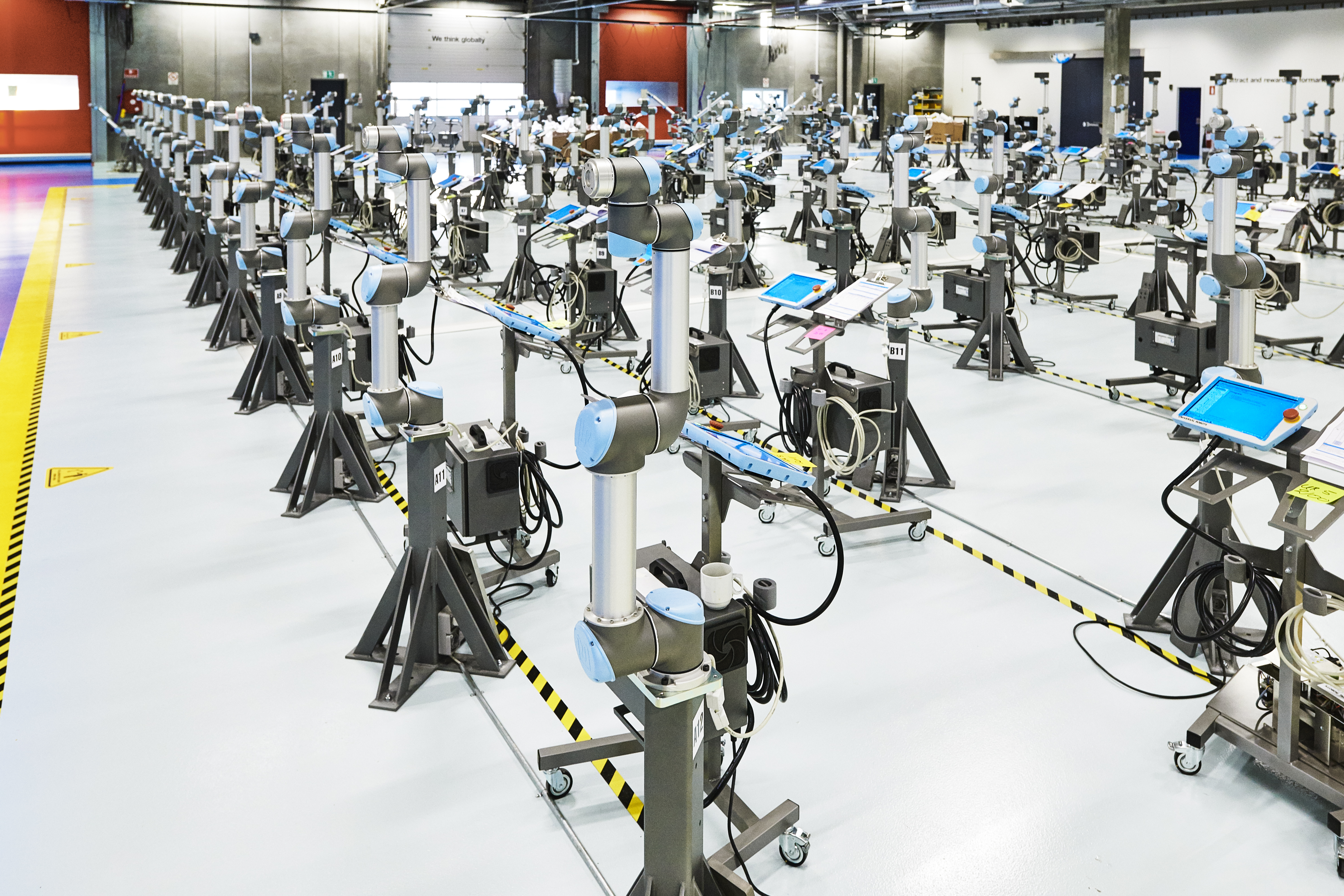With digitalisation starting to make an impact on the maritime industry, could collaborative robots or ‘cobots’ be a new step forward in improving manufacturing processes?
An era of new solutions and processes has entered the shipping industry as it adapts to the benefits of digitalisation, but there are fears that these technologies may take over jobs in the future. But one company has developed a system that it says will alleviate those fears.
The company is Universal Robots in Denmark, and the idea it had back in 2004 was of collaborative robots, or ‘cobots’. Since then has been taken up by many different industries such as automotive, pharmaceuticals and industrial processes, highlights Mark Grey, the company’s UK sales manager.

The idea behind the cobots is that they work alongside the work force to help increase productivity by taking on repetitive jobs that take time and allow for people to focus on more intricate tasks that need the human element.
Another advantage is they they can also help keep workers healthier through reduced risk factors to health, such as reductions in repetitive strain and accidental injuries to humans. 80% of the thousands of Universal’s robots worldwide operate with no safety guarding (after risk assessment). The safety system in its robots is approved and certified by TÜV (The German Technical Inspection Association).
To make the cobots more human friendly and to be safe working alongside their fellow human counterparts Universal Robots has set limits on the robots to ensure their safety. The cobots have been limited in the speed that they can operate and also the weight that they can handle, notes Grey.
Grey highlights that by using cobots there is increased productivity, whereby he explains with one example where a company had 12 people working on a process line. This was then changed to eight people and two cobots, “the company saw a 50% increase in productivity,” he adds.
Cobots have not entered the commercial shipping industry as yet and may be limited to the capacities that they can handle to ensure safety, but they still may have a place for smaller processes and for sectors such as the yacht market, suggests Grey. He highlights that a form of collaborative style robots has recently been used for inspecting wind turbines.
Working with cobots is not about replacing the work force and in some instances can actually help organisations that are finding it hard to recruit the skilled labour that it needs, such as in the case of ThyssenKrupp Bilsted. “If we relied only on hiring new people, we would never be able to expand three times the size we originally had. The cobots have opened a new avenue of growth for us, while we’ve been able to retain existing workforce. No worker will lose their job to a robot.” Aldo Albieri, operations manager, ThyssenKrupp Bilstein.
Trelleborg Sealing Solutions needed an effective way to optimise production with orders ranging anywhere between a single unit to several million. Customers were demanding lower prices, higher quality and faster delivery.
Following a major modernisation of the machinery at its Danish production site Trelleborg Sealing Solutions was faced with a space problem: The new CNC machines were taking up far more cubic metres than the old-fashioned turning machines. As a consequence, optimising processes by means of robotic arms was made difficult.
“When we were told we were going to use robots at Trelleborg, we were afraid that it would cost jobs. But it’s been quite the opposite. At the same time as we get more and more new machines and robots, we also get even more orders. The increase in business meant that 50 new employees were hired” Dragen Jovanovic, operator at Trelleborg.
The cobot is introducing a new way or working with industries and also help to fill gaps in the work force, whilst also upping the productivity or companies. Could this be the next step for the maritime industry in introducing new technologies, whilst also keeping the experience of the work force that it has?

































